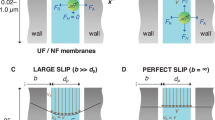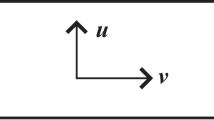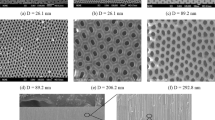Abstract
IN a former publication1 the following expression was derived for the height equivalent to a theoretical plate (HETP), h, of a tubular column of radius r:  where: v = average carrier gas velocity; Dg = molecular diffusion coefficient of component in the gas phase; Dl = molecular diffusion coefficient of component in the liquid phase; k = capacity ratio of liquid over gas phase; r = radius of tubular column; K = partition coefficient.
where: v = average carrier gas velocity; Dg = molecular diffusion coefficient of component in the gas phase; Dl = molecular diffusion coefficient of component in the liquid phase; k = capacity ratio of liquid over gas phase; r = radius of tubular column; K = partition coefficient.
This is a preview of subscription content, access via your institution
Access options
Subscribe to this journal
Receive 51 print issues and online access
$199.00 per year
only $3.90 per issue
Buy this article
- Purchase on Springer Link
- Instant access to full article PDF
Prices may be subject to local taxes which are calculated during checkout
Similar content being viewed by others
References
Golay, M. J. E., Gas Chromatography, edit. by Desty, D. H. (Butterworths, 1958).
Author information
Authors and Affiliations
Rights and permissions
About this article
Cite this article
GOLAY, M. Height Equivalent to a Theoretical Plate of Tubular Gas Chromatographic Columns lined with a Porous Layer. Nature 199, 370–371 (1963). https://doi.org/10.1038/199370a0
Issue Date:
DOI: https://doi.org/10.1038/199370a0
This article is cited by
-
Investigation of the role of the carrier gas in capillary gas-solid chromatography
Russian Chemical Bulletin (1996)
-
Capillary columns-from London to London in 25 years
Chromatographia (1982)
-
The efficiency of open tubular gas chromatographic columns
Chromatographia (1979)
-
The efficiency of open tubular gas chromatographic columns part II. A comparison of theoretical equations for the efficiency of support coated open tubular columns
Chromatographia (1979)
-
Dr. M. J. E. Golay 75 years old
Chromatographia (1977)
Comments
By submitting a comment you agree to abide by our Terms and Community Guidelines. If you find something abusive or that does not comply with our terms or guidelines please flag it as inappropriate.



